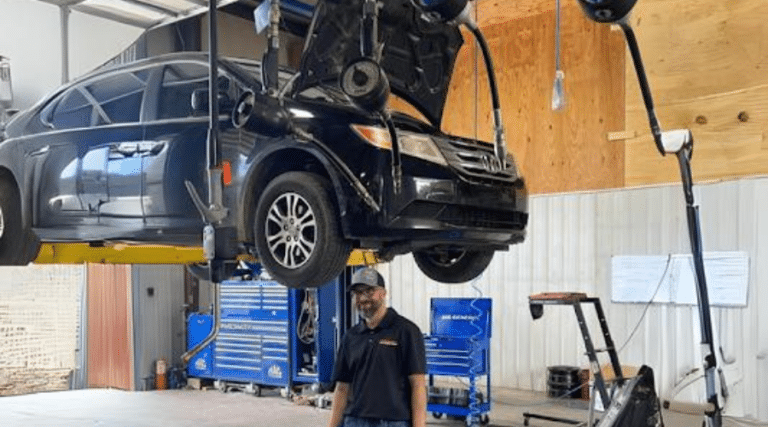All Categories
Featured

Two key services that are frequently overlooked yet have a considerable impact on tire long life and performance are tire turning and positioning. Allow's dive into what tire rotation and alignment are and why they're essential for your car.
What Is Tire Rotation? Tire rotation is the process of relocating your tires from one setting to another to ensure they put on equally. Because your cars and truck's tires function at different rates depending upon their setting (front tires versus back tires), revolving them frequently aids to disperse the wear evenly, resulting in a much longer life expectancy for your tires.
Tires on the front axle tend to wear much more quickly than those on the rear axle, specifically in front-wheel-drive vehicles, where the front tires handle both steering and power. On the various other hand, back tires may put on unevenly depending upon the vehicle's weight distribution and driving conditions. By revolving your tires every 6,000 to 8,000 miles (or as suggested by the maker), you'll make certain a more balanced wear pattern.
What Is Tire Alignment? Tire placement, additionally understood as wheel placement, describes adjusting the angles of your automobile's wheels to the supplier's specifications. Appropriate alignment makes certain that your tires are pointing in the right direction, and it helps maximize tire life and improve automobile handling. There are 3 major aspects of alignment: camber, caster, and toe.
Camber refers to the tilt of the tires from the front of the lorry. If your tires are tilted too much internal or outside, it can create uneven wear. Caster describes the angle of the steering axis when watched from the side of the cars and truck. This affects the security of the steering, especially when driving straight. Toe describes the angle at which the tires point internal or outward when checked out from above. This influences how your lorry tracks when traveling. An appropriate positioning ensures that all four tires are pointing straight in advance and are angled appropriately. Imbalance can result from hitting potholes, curbs, or just from the wear of suspension components in time.
Why Tire Turning and Placement Matter. Extended Tire Life. Both tire turning and alignment help protect against uneven tire wear. When your tires put on equally, they last longer, which can conserve you cash over time by decreasing the requirement for premature replacements.
Improved Safety And Security. Appropriate tire turning and placement boost automobile security and handling. Misaligned tires or unevenly used tires can negatively impact your ability to steer and quit your vehicle, particularly in emergency situation circumstances. Normal maintenance guarantees your tires perform ideally, giving a more secure driving experience.
Much Better Fuel Effectiveness. If your tires are not lined up appropriately, they may drag against the road surface, creating resistance. This extra friction can minimize fuel performance, causing your car to take in even more gas. Routine tire positioning makes sure that your lorry relocates successfully, enhancing gas mileage.
Enhanced Convenience. Imbalance or unevenly worn tires can lead to a rougher experience, as your automobile may pull away or trigger vibrations. By keeping your tires revolved and aligned, you'll appreciate a smoother and more comfortable driving experience.
Indications That Your Tires Need Rotation or Positioning. It's crucial to stay sharp for any signs that your tires need turning or placement. Look out for these common signs:
Irregular Tire Wear: If you see that a person tire is significantly a lot more used than the others, it may be time for a rotation or alignment. Steering Pull: If your vehicle pulls away while driving straight, this could show misalignment. Resonances: If you really feel resonances in the guiding wheel or the vehicle itself, maybe an indication of imbalance or uneven tire wear. Squealing Tires: Uncommon tire noise could also indicate incorrect positioning or the demand for a tire turning. Just how Typically Should You Revolve and Align Your Tires? Tire turning ought to typically be done every 6,000 to 8,000 miles or as defined in your vehicle's owner's guidebook. It's a great idea to rotate your tires during every oil change, as this will certainly help you remain on top of regular upkeep.
As for placement, it doesn't require as constant service. Normally, positioning should be examined at the very least once a year or whenever you notice problems like drawing to one side or vibration. You might also require alignment if you have actually struck a huge fracture or visual, which can toss your wheels out of alignment.
Verdict: Maintain Your Tires in Top Shape. Tire rotation and positioning are vital solutions that keep your car running efficiently, safely, and successfully. By putting in the time to have your tires revolved and straightened consistently, you're buying your automobile's efficiency and longevity, while also improving your safety and security when traveling. Remain positive with tire maintenance, and your cars and truck will thank you with much better gas economic climate, enhanced handling, and extended tire life.
Latest Posts
Uncover the Best Auto Repair Deals in Montclare, Chicago
Explore Brake Repair & More: Complete Services Guide from Montclare Auto Repair
Explore Exclusive Auto Repair Offers in Chicago at Montclare Auto Repair
More
Latest Posts
Uncover the Best Auto Repair Deals in Montclare, Chicago
Explore Brake Repair & More: Complete Services Guide from Montclare Auto Repair
Explore Exclusive Auto Repair Offers in Chicago at Montclare Auto Repair
